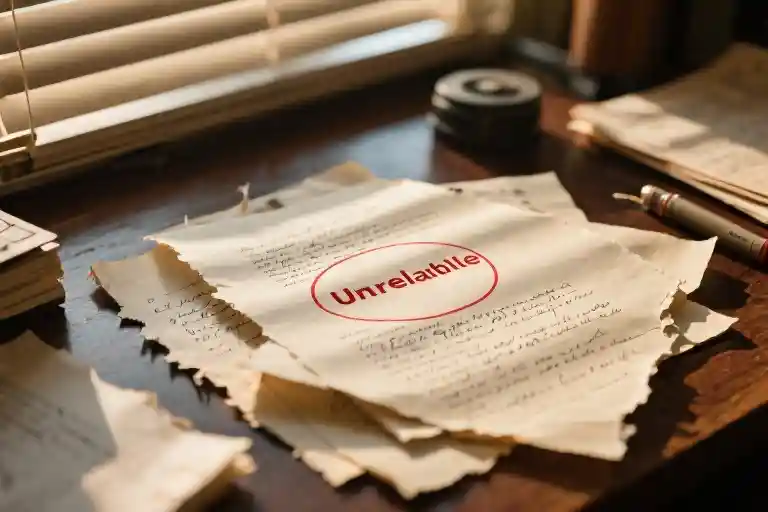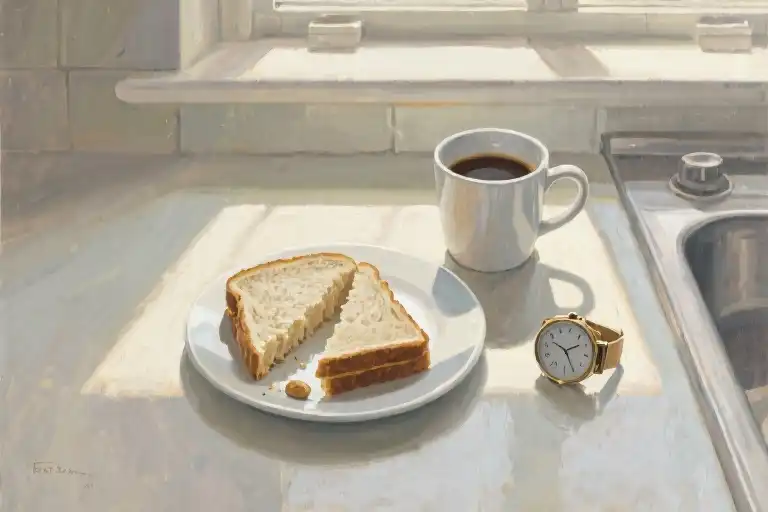The fluorescent lights hummed overhead as Attica Locke stared at the latest round of script notes for Empire. The studio executive’s red pen had circled her most personal scene – the one inspired by her grandmother’s stories – with a single word scribbled in the margin: Unrelatable. Her fingers tightened around the contract pages. In that suspended moment, every compromise she’d made in Hollywood flashed before her: the watered-down dialogue, the flattened characters, the cultural nuances labeled ‘too niche’. Then came the sound of tearing paper.
This wasn’t rebellion for spectacle’s sake. Locke’s filmography tells the story of a creator refusing to be erased: from Black Water Rising‘s politically charged mysteries to When They See Us‘s searing racial injustice portrayal. Her Highway 59 crime novels became New York Times bestsellers not despite their unflinching social commentary, but because of it. By the time she adapted her sister Tembi’s memoir into From Scratch, Locke had mastered the alchemy of turning personal truth into universal storytelling – without sanitizing either.
Every creative professional faces this crossroads eventually. When the market research reports contradict your artistic instincts, when focus groups veto your narrative choices, what survives? The answer lives in Locke’s career trajectory – not as a linear success story, but as a case study in creative self-defense. Her pivot from frustrated screenwriter to showrunner didn’t require abandoning television’s collaborative magic; it demanded reinventing the rules of engagement. The same hands that crafted Heaven, My Home‘s literary cadence later shaped Little Fires Everywhere‘s visual poetry, proving commercial platforms can amplify rather than dilute authentic voices.
What makes Locke’s journey particularly instructive isn’t just the accolades (though the Edgar Awards and Emmy nominations certainly validate her approach). It’s the forensic way she diagnosed Hollywood’s development system – not as some villainous entity, but as a well-intentioned machine that mistakes demographic spreadsheets for audience understanding. Her solution wasn’t to rage against the machine, but to build her own storytelling infrastructure where character depth and social resonance became the metrics that mattered.
Consider this opening chapter your backstage pass to that reconstruction project. We’ll examine the specific creative fractures that pushed Locke to walk away (and the surprising reasons she eventually returned). You’ll see pages from her actual development notebooks where studio notes collide with her margin rebellions. Most importantly, you’ll gather tools to conduct your own artistic triage – because protecting your narrative DNA doesn’t require burning bridges. Sometimes it just takes learning to speak the system’s language while whispering your truth in the spaces between.
Systemic Trauma: How Hollywood Alienates Creators
The Hollywood development machine operates with ruthless efficiency, grinding down original voices into homogenized content. Attica Locke’s experience mirrors what countless writers face – a system that treats storytelling like assembling IKEA furniture according to corporate blueprints. During her 2014-2016 ‘creative aphasia’ period, she documented the soul-crushing process: eighteen development meetings for a single episode, thirty-seven executives weighing in on character arcs, until her scripts became unrecognizable from her initial vision.
What gets lost in translation isn’t just individual scenes, but the narrative DNA itself. Locke kept two parallel sets of notes – the official studio development memos (‘Make the protagonist more likable’) versus her private marginalia (‘This note violates the story’s moral ambiguity’). The dissonance became unbearable when receiving feedback like ‘Can the racial tension be more… subtle?’ on a project deliberately about systemic injustice.
Creative erosion happens in measurable stages:
- The Compromise Cascade: Small changes accumulate until the core premise shifts
- Voice Dilution: Distinctive prose gets smoothed into ‘house style’
- Trauma Transfer: The writer’s frustration bleeds into the work itself
Locke’s breaking point came during Empire’s second season, when network notes demanded simplifying a complex female character into ‘someone’s girlfriend.’ Her handwritten journal from that day reads: ‘They don’t want my stories – they want my labor.’ This crystallized the fundamental conflict – artistic integrity versus industrial production.
For writers navigating similar systems, try this diagnostic:
- Does your protagonist still surprise you after development notes?
- Can you recognize your thematic concerns in the current draft?
- Are you excited to write each scene, or just checking boxes?
The answers reveal your project’s soul attrition rate. Locke’s solution wasn’t rejection but strategic resistance – she began smuggling literary devices into TV scripts, planting metaphorical landmines that survived the development process. Her crime novels became the proving ground for techniques too ‘risky’ for television, creating a feedback loop where each medium strengthened the other.
Hollywood’s machinery wants writers who function like replaceable parts. The rebellion begins when you stop asking ‘Will this get approved?’ and start asking ‘Does this feel true?’
The Paper Rebellion: When Fiction Becomes Armor
There’s a particular kind of alchemy that happens when a writer takes their bruised creativity and channels it into ink. For Attica Locke, the transition from Hollywood’s development hell to the quiet sovereignty of novel writing wasn’t just a career pivot—it was an act of literary resistance. Her debut Black Water Rising emerged not as an escape from systemic frustrations, but as a coded manifesto against them.
Crime Fiction as Protest Literature
What appears on surface as a taut legal thriller set in 1980s Houston secretly functions as a masterclass in narrative subversion. Locke smuggles racial commentary into courtroom drama the way her protagonist Jay Porter smuggles clients past corrupt systems. The novel’s central mystery—an unidentified woman pulled from Buffalo Bayou—becomes a metaphor for stories Hollywood routinely drowns. By wrapping institutional critique in genre conventions, Locke achieved what studio notes sessions never allowed: nuanced social observation packaged as commercial entertainment.
The Forbidden Drafts: Script vs Novel
In Locke’s archives, two treatments of similar material reveal everything about creative priorities. A rejected screenplay about environmental racism features:
- Protagonist changed from ambivalent black lawyer to white activist
- Corporate villain given redemptive arc per ‘likability’ notes
- Climactic courtroom speech reduced to 90-second montage
The novelized version preserves:
- Jay Porter’s morally complex interiority
- Unflinching depiction of petrochemical industry harm
- 12-page trial sequence where language itself becomes the hero
This contrast demonstrates Locke’s core belief: novels allow writers to sit with discomfort rather than resolve it prematurely for mass consumption.
The Literary Preservation Kit
Locke’s personal checklist for safeguarding artistic integrity contains surprising pragmatism:
- The Page 75 Test: If a scene survives intact to this midpoint, it’s earned its ideological weight
- Secondary Character Veto: Any figure who could be removed without altering themes probably should be
- Commercial Contraband: Deliberately include one element guaranteed to make producers nervous (for Locke, it’s slow-burn moral dilemmas)
- Emergency Voice Recall: When stuck, re-read the angriest letter you ever wrote but never sent
What makes these strategies revolutionary isn’t their complexity, but their acknowledgment that creative survival requires systematic defense mechanisms. The tools aren’t about rejecting commercial success—Locke’s bestseller status proves their effectiveness—but about achieving it without self-betrayal.
Her handwritten margin note in an early draft of Black Water Rising captures this philosophy: ‘They can make you cut scenes, but never let them cut your nerve endings.’ This tension between external compromise and internal resistance fuels the Highway 59 series’ enduring power, laying groundwork for Guide Me Home‘s triumphant conclusion. The page, for Locke, remains the one territory where storytellers can still plant flags on principle.
When Private Becomes Universal: The Alchemy of Adapting From Scratch
Attica Locke’s transition from novelist to showrunner wasn’t just a career pivot—it was an act of creative alchemy. When she adapted her sister Tembi Locke’s memoir into the Netflix series From Scratch, she demonstrated how personal narratives can transcend individual experience to become collective emotional currency. This adaptation process reveals twelve crucial transformations that every storyteller should understand when bridging literature and screen.
The 12-Step Transmutation Process
- Memory to Mythology
The raw material began as Tembi’s recollections of love and loss in Sicily. Attica restructured these into universal archetypes—not “my sister’s story” but “everyone’s first encounter with grief.” Screenwriters often stumble by clinging too tightly to biographical accuracy; Locke instead asked: Which details serve emotional truth rather than factual reporting? - Diary Entries to Dramatic Beats
Personal journals provided haunting vignettes (“the way he stirred his coffee with his left hand even after the stroke”), but episodic television demands momentum. Locke’s solution: use these intimate observations as emotional punctuation between plot-driving scenes. - Geographical Specificity to Emotional Geography
The Sicilian setting wasn’t just backdrop—it became an active character. Production designers worked with Locke to translate literary descriptions into visual metaphors (the constantly changing light in the courtyard mirroring the protagonist’s emotional shifts). - Family Dialect to Universal Language
Inside jokes between sisters became audience-access points. That phrase they repeated as children? It’s now the series’ thematic refrain, reintroduced in Episode 3 with a payoff in the finale.
The Showrunner’s Dilemma: Tyrant or Guardian?
Anonymous crew interviews reveal Locke’s reputation:
“She’d fight like hell to keep a single line from Tembi’s original email—then cheerfully axe a whole subplot if it felt ‘written’ rather than ‘lived.”
This duality defines effective adaptation—rigorous fidelity to the story’s essence paired with ruthless flexibility in its execution. Locke’s novelist instincts surfaced in unexpected ways:
- Insisting on “quiet moments that would never survive a writers’ room” (the 47-second scene of Amy folding a hospital blanket)
- Replacing expository dialogue with literary techniques (using food preparation montages as narrative exposition)
Does Your Story Have Cross-Media DNA?
Take this diagnostic:
- Tactile Memory Test
Can readers physically feel your descriptions? (The memoir’s “scent of almond blossoms clinging to his collar” became a recurring olfactory motif in the series) - Silent Scene Challenge
Identify a passage that could play without dialogue. Locke adapted Tembi’s “waiting room vigil” chapter into a six-minute sequence using only actors’ breathing patterns. - Perspective Flexibility
Does your narrative withstand viewpoint shifts? The book’s first-person account successfully expanded to include the Sicilian in-laws’ perspectives—a risk that paid off in cultural richness.
What emerges isn’t just an adaptation blueprint, but proof that the most personal stories make the most powerful connections. As Locke told her writers’ room: “We’re not filming a diary—we’re building a bridge between one heart and millions.”
The Art of Survival: A Wartime Manual for Creatives
Attica Locke’s journey through Hollywood’s trenches yielded more than battle scars—it produced a field-tested survival system for artists navigating commercial systems. This isn’t about compromise; it’s about strategic resistance through what she calls the Trinity Principles.
The Trinity Framework
Locke’s methodology operates on three interdependent axes:
- Authenticity Audits: A monthly self-check where you compare your current project against your original creative vision using her 10-point divergence scale
- Trauma Alchemy: Converting negative industry experiences into narrative fuel (her Highway 59 series absorbed seven years of studio rejection motifs)
- Cross-Media Blood Testing: Evaluating whether a story’s core survives translation between formats
The downloadable workshop template includes her actual margin notes from adapting From Scratch, showing where she resisted streamlining her sister’s memoir for television. You’ll find highlighted passages where she preserved uncomfortable silences that executives wanted to fill with exposition.
Five Countermoves When They Say “Make It Commercial”
These aren’t theoretical—they’re verbatim strategies from Locke’s showrunning battles:
- The Trojan Horse: “Let’s try it your way” (then demonstrate why the commercial version structurally fails during table reads)
- Data Jiu-Jitsu: Presenting Nielsen stats proving audiences prefer complex female leads (her Empire S2 argument)
- Genre Baiting: Framing social commentary as crime thriller elements (her Black Water Rising technique)
- Budgetary Chess: Trading one concession for two authenticity preserves (“I’ll shorten the flashback if we keep the Creole dialogue”)
- The Nuclear Option: Walking away with your IP intact (requires advance financial planning she outlines in the toolkit)
Building Your Resistance Network
The supplemental “Locke Alliance Map” identifies:
- Entertainment lawyers who understand literary rights
- Development executives who respect source material
- Fellow creators for emergency sanity checks
Her annotated contact list reveals surprising allies—like the network executive who secretly feeds her unpublished novels to his MFA students. “Sometimes,” Locke notes, “your fiercest advocates wear suits.”
The chapter closes with her Emergency Creative Triage Protocol—a flowchart for deciding when to dig in versus when to strategically retreat. It’s the same decision matrix she used when turning down a major franchise to finish Guide Me Home. As the handwritten note at the bottom reminds: “No paycheck buys back a story only you can tell.”
The Unfinished Stories Waiting for Your Voice
The blank page isn’t just empty space—it’s potential energy. Attica Locke’s journey whispers this truth: every story the system rejected, every narrative deemed ‘uncommercial’ or ‘too specific,’ carries the DNA of something revolutionary. That screenplay draft Hollywood producers called ‘unmarketable’ became the novel critics hailed as ‘genre-defying.’ Those personal memories labeled ‘niche’ transformed into a series that made audiences across twelve countries weep in recognition.
This final act isn’t about closure, but ignition.
Your Turn at the Microphone
Three actionable takeaways from Locke’s playbook:
- The Subversive Power of Specificity
When developing From Scratch, network executives suggested broadening the Sicilian cultural elements to ‘appeal to more viewers.’ Locke’s countermove? She doubled down on the authenticity—the exact homemade pasta shapes, the untranslated dialect phrases. Result? The show’s cultural specificity became its universal selling point. - The Salvage Operation
Dig through your ‘discarded ideas’ folder. That subplot cut from your last project because it ‘didn’t serve the main narrative’? Locke’s Highway 59 series was built from fragments of abandoned scripts, reshaped into literary gold. - The Strategic Retreat
Sometimes stepping back is the ultimate power move. When Locke temporarily left TV to write The Cutting Season, she wasn’t surrendering—she was gathering strength. The novel’s success later gave her the leverage to return to Hollywood on her terms as a showrunner.
The Invitation
Attica keeps a bulletin board in her writing room pinned with rejection letters—not as shame trophies, but as a map of near-misses that shaped her trajectory. Yours might look different:
- The manuscript still in drawers
- The pilot script labeled ‘too quiet’
- The memoir draft called ‘not trauma-heavy enough’
These aren’t failures. They’re your From Scratch waiting to happen.
Last line written in Locke’s Guide Me Home notebook: ‘The stories that scare you most to tell are the ones that will carry someone home.’





